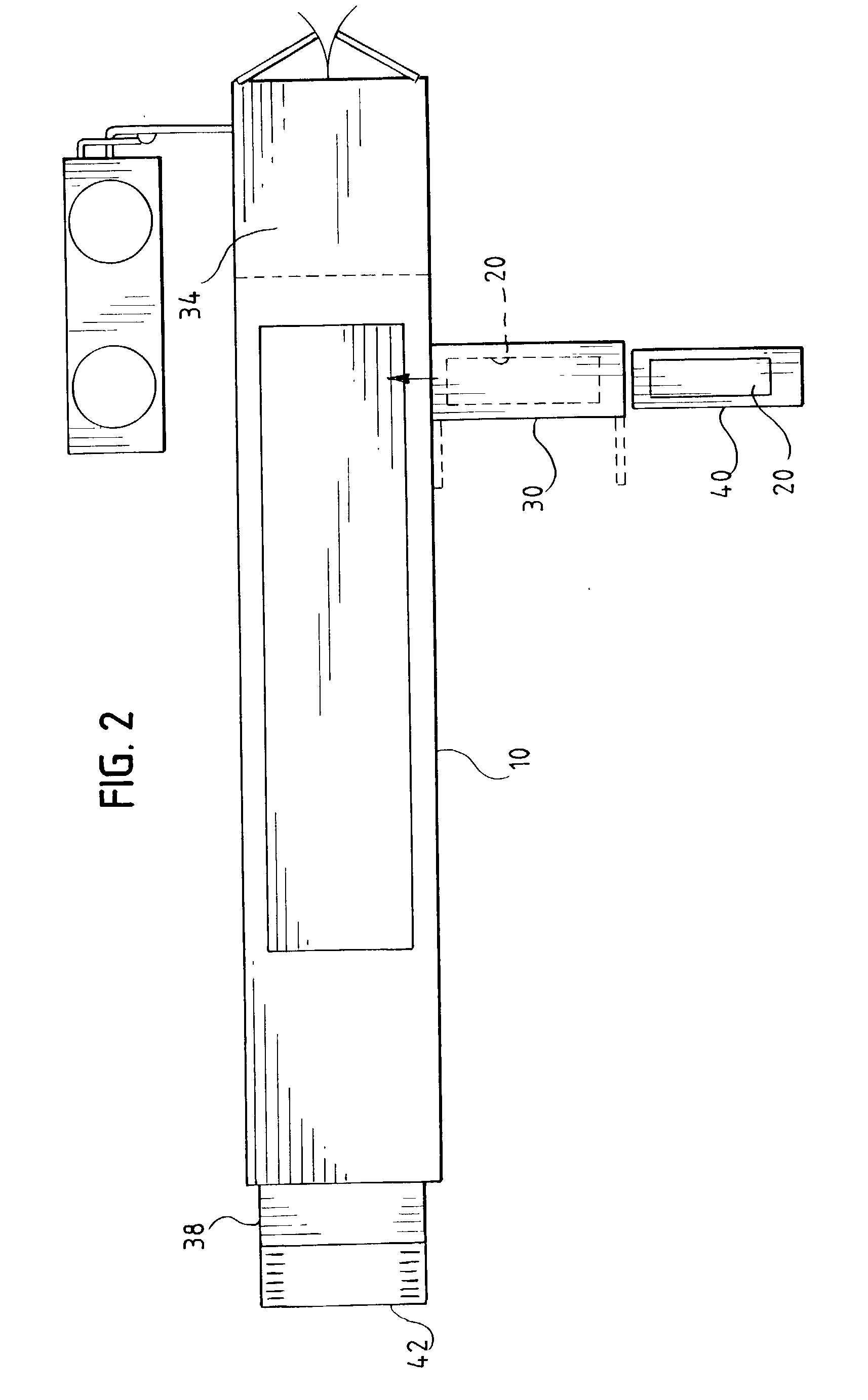Continuous throughput blast freezer
a technology of blast freezer and continuous throughput, which is applied in the direction of cooling apparatus, lighting and heating apparatus, support, etc., can solve the problems of affecting the taste and texture of the resulting frozen product, the unavoidable change of freezing food products, and the substantial alteration of the taste and texture of preserved foodstuffs
- Summary
- Abstract
- Description
- Claims
- Application Information
AI Technical Summary
Benefits of technology
Problems solved by technology
Method used
Image
Examples
Embodiment Construction
[0052] Overview
[0053] Referring now to FIG. 1, the general arrangement of one representative embodiment of a continuous production blast freezer system is shown. The arrangement includes an insulated enclosure 10 forming a chamber or cell in which product to be frozen is introduced at one location, an entrance 12, and having a second location in which frozen product is removed from the enclosure 10, at an exit 14. The system includes a refrigeration system for freezing the product, comprising an evaporative heat exchanger placed within the enclosure 10 and an associated refrigeration condensing unit (not shown in FIG. 1). The refrigeration system includes fans mounted within the enclosure 10 that blow air through the evaporator in a direction generally transverse to the longitudinal axis 18 of the enclosure. The complete self-contained continuous production blast freezer plugs into any usable power source to power the self-contained refrigeration system. An alternative configuration...
PUM
 Login to View More
Login to View More Abstract
Description
Claims
Application Information
 Login to View More
Login to View More - R&D
- Intellectual Property
- Life Sciences
- Materials
- Tech Scout
- Unparalleled Data Quality
- Higher Quality Content
- 60% Fewer Hallucinations
Browse by: Latest US Patents, China's latest patents, Technical Efficacy Thesaurus, Application Domain, Technology Topic, Popular Technical Reports.
© 2025 PatSnap. All rights reserved.Legal|Privacy policy|Modern Slavery Act Transparency Statement|Sitemap|About US| Contact US: help@patsnap.com



